Oh how we’ve changed
Host: Katherine Research Station
Written by Jodie Ward, Pastoral Production Extension Officer
When the time came around again for the Pastoral Production Team of Katherine Research Station to host Central Station, I looked back at our previous blogs and became overwhelmed by how much the team had changed since we first contributed to Central Station in 2013. So I thought, before I share with you an insight into our daily lives, I should probably introduce you to some of the rest of the extended team (much like an extended family). For us to be able to do what we do and ensure that it is relevant and applicable to industry, we need a whole range of expertise that one person alone cannot possess – experts in ruminant nutrition, rangeland scientists, biometrician, GIS officers, fertility specialists, and much more!
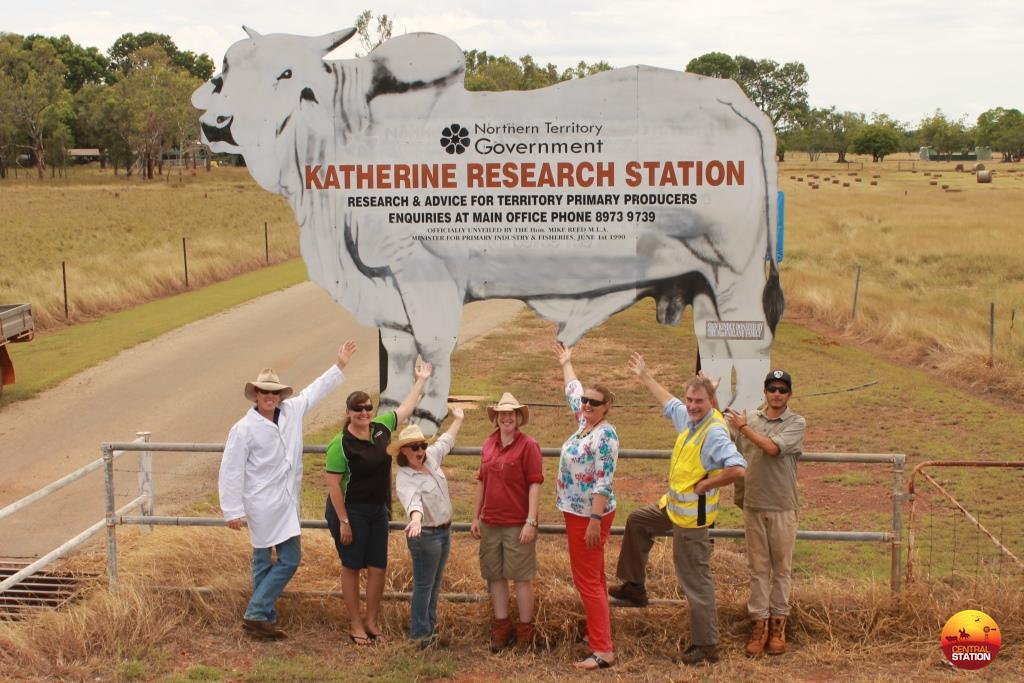
To make sure I didn’t capture their passion and role description inaccurately, I asked them all to write me a brief description of what they do and why it is they love their job. Please let me introduce the crew:
Robyn Cowley, Senior Rangeland Scientist: “Rangelands are my passion – red dirt, blue skies, and open vistas. We develop evidence-based management recommendations (no fake news here), through our research on grazing and fire in the NT pastoral lands. What is the safe carrying capacity for different land types? We look at all the underlying steps to calculate this, including pasture growth and safe utilisation rates of different land types and how cattle use the landscape. How can fire be used in the grazed landscape to keep it productive? We have a long-term fire experiment (25 years this year!) to answer that. What is the best way to graze pastures, the best combination of stocking rates and grazing system (set stocking, rotational grazing, and spelling), to sustain or improve pasture condition and carrying capacity over the longer term? It is our job to assist the pastoral industry to be the best that it can be while maintaining the resource for future Territorians.”
Callen Thompson, Extension Agronomist: “I am an extension Agronomist working on diversification of pastoral leases. This involves working with producers and research staff to develop productive and sustainable crops, hay, and improved pasture systems. A big part of our project is improved pasture, which for me is great, because although I do enjoy sitting on a tractor and burning diesel, my passion is livestock as my family run cattle in NSW. I hope I can help producers make an informed decision when they are looking at options for pasture improvement. Taking the plunge into improved pasture is expensive and can involve skills that are not normally used on a pastoral property. My job is to give producers advice which increases the chance of success and limits the chances of failure.”
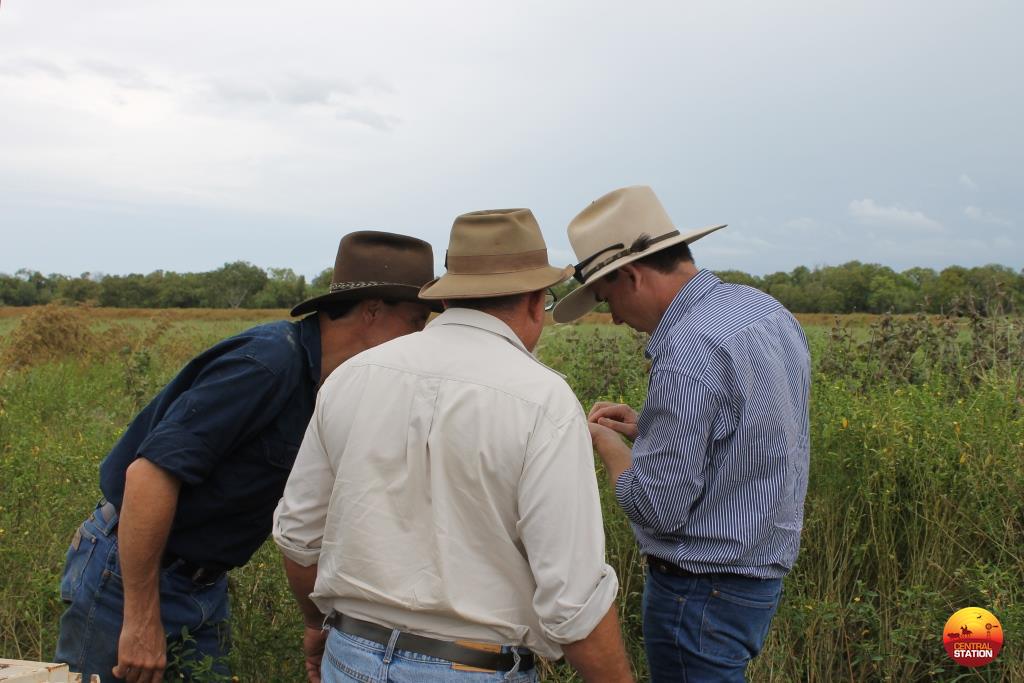 Callen Thompson (right), Extension Agronomist, identifying if weed seeds are ripe for the spreading at a recent Roper River Landcare meeting.
Callen Thompson (right), Extension Agronomist, identifying if weed seeds are ripe for the spreading at a recent Roper River Landcare meeting.
Jane Douglas, Pastoral Production Officer: “I’m based in Tennant Creek and my role involves supporting research activities, which means a lot of field work such as grass counting (biomass estimates), collecting faecal samples from cattle, pregnancy testing heifers/cows, processing weaners and anything in-between. Another large part of my role is working in extension, which involves running field days, workshops, and forums for anyone from stationhands in their first job out of school all the way through to managers and station owners. My work can send me across the whole of the Northern Territory, from the Mulga in the Alice, across the Mitchell grass Barkly, to the wattle covered Victoria River District. I love my role as I get to see a variety of properties and management styles, and I enjoy the fact that the pimply faced teenager that’s sitting at the back of the class room may one day become a manager through utilising some of the skills that I’m trying to teach.”
Mark Hearnden, Biometrician: “I take the raw data the rest of the team collect and turn it into something meaningful – were the results observed significant or not? And what does this mean I hear you ask – Well, if something is scientifically significant, you can guarantee that the effect of the treatment was a result of that treatment and not from any other influencing or coincidental factors.”
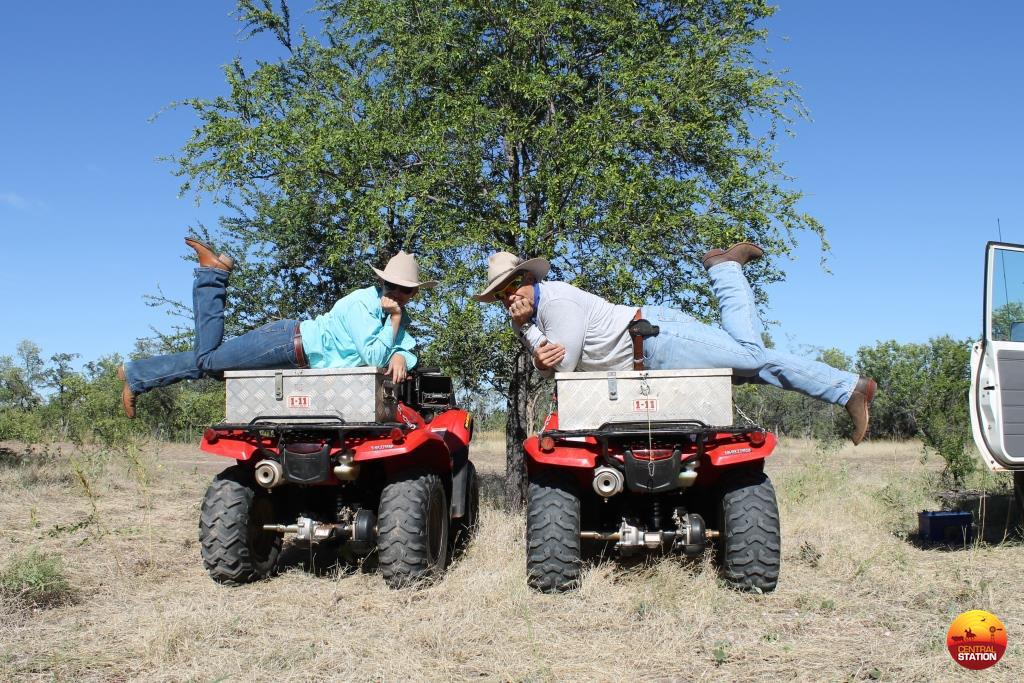 Not just the Biometrician, Mark Hearnden (right) is a bit of a laugh to have on the team as well!
Not just the Biometrician, Mark Hearnden (right) is a bit of a laugh to have on the team as well!
Gabby Penna, Pastoral Production Officer: “The purpose of my role is to conduct research and facilitate extension activities to provide NT producers the up-to-date information they need for their business. Working in Tennant Creek provides a unique situation where I can travel to and help the producers of the Barkly, Alice Springs, and Katherine regions. In a typical week I can be found to be organising courses and forums, conducting research for literature reviews, and partaking in field work for the collection of data. I love my job because I get to spend time learning from such a wide variety of people, from station managers to research professionals. Although only new to the team, I am really looking forward to exploring all these opportunities have to offer.”
Caroline Pettit, Rangeland Research Officer: “As a Rangeland Research Officer my job takes me into the heart of the cattle industry – on the ground where it all starts, the feed base. Utilising pasture resources it to their full potential while protecting and improving them is the ultimate aim in my position. My main area of work is carrying capacity. This is all about matching the number of animals to the available resource. In my role I also take part in long term research trials which aim to improve our knowledge on better land management practises to make the cattle industry in the NT sustainable and profitable into the future.”
Dale Jenner, GIS Officer: “Jodie asked us to write a paragraph about what we do and why we enjoy it. The second part, asking why I enjoy my job, is easy to state! I work with some pretty amazing, inspiring, and dedicated people! I enjoy the challenge of the job and it certainly beats the usual office job – not many other office jobs allow you to go out on station, see cattle, count grass, and then set it on fire! The first part, describing my job, is the hardest part for me. Usually when I tell people I am a GIS officer and they ask ‘what’s that?’ I usually just tell them ‘I make maps’, but it’s a lot more than that. While I do make a lot of maps I also support my colleagues by extracting and transforming data for carrying capacity reports or research papers. I prepare maps and data for fieldwork including interpretation analysis.”
Kieren McCosker, Beef Production Scientist: “I’m a beef production research scientist based in Katherine, working on a number of different topics. With the view of staying for three years, I accepted a position in 2002 but am still here in 2017. Mostly, because of the great relationship we have with the cattle industry and my role allows me the opportunity to mix practical work while hopefully identifying some practical solutions to minimise the impact of ‘challenges’ for our clients, which can hopefully transfer into improving the livelihoods of them. Currently, I am mostly associated with a project with the aim to quantify the impact of wild dogs and how they’re managed on cattle production, and exploring value-adding potential of surplus cattle to breeding requirements (or culled cows). I also have an interest in assisting industry stakeholders to capture, manage, and summarise animal performance data so that they can be used to make better or more informed management decisions.”
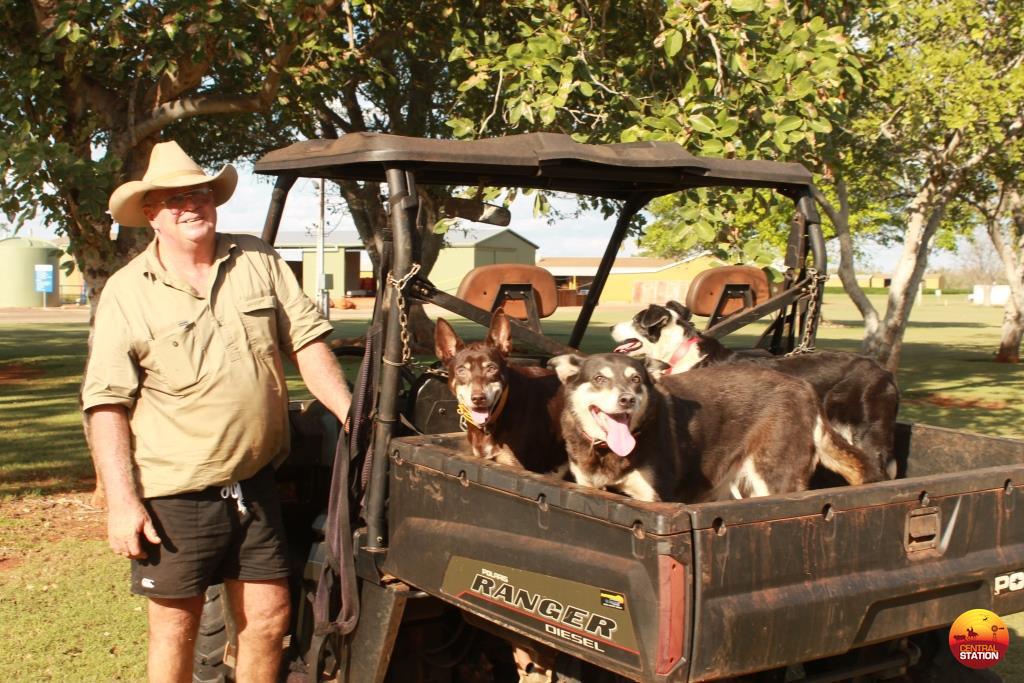 Jack Wheeler, Farm Manager of Katherine Research Station and his trusty A Team.
Jack Wheeler, Farm Manager of Katherine Research Station and his trusty A Team.
Lastly, there is me, Jodie, who will be your host for this week. My job as Pastoral Production Extension Officer is to make sure that beef industry stakeholders in the Northern Territory have access to the latest research results and publications. My day-to-day work varies from organising and facilitating workshops, to identifying unknown pasture plants for pastoralists to writing reports to funding bodies! Although the latter is the least exciting component of what I do, it means that we are able to secure funding for bigger and better projects and activities that we have been told by our stakeholders that they really want. I enjoy being part of the beef industry because it’s always adapting and improving; there are always new challenges to overcome, new people to meet, and new things to learn.
And that, my friends, is a snapshot of most of our extended team (much like an extended family). As you can see, we have a diverse range of roles in the greater DPIR team and more and more we are figuring out how we can help each other out for the benefit of the northern beef industry.
I hope you enjoy the stories I’ll be sharing with you this week!
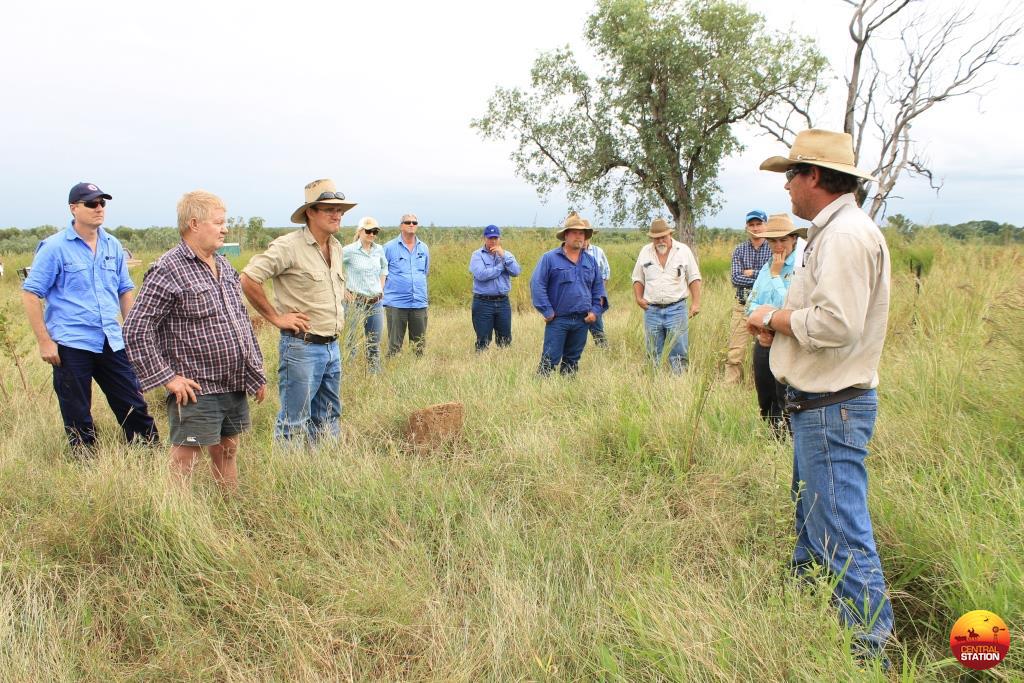 Sometimes, I get to do things with community groups, like attend the Roper River Landcare Association meeting.
Sometimes, I get to do things with community groups, like attend the Roper River Landcare Association meeting.
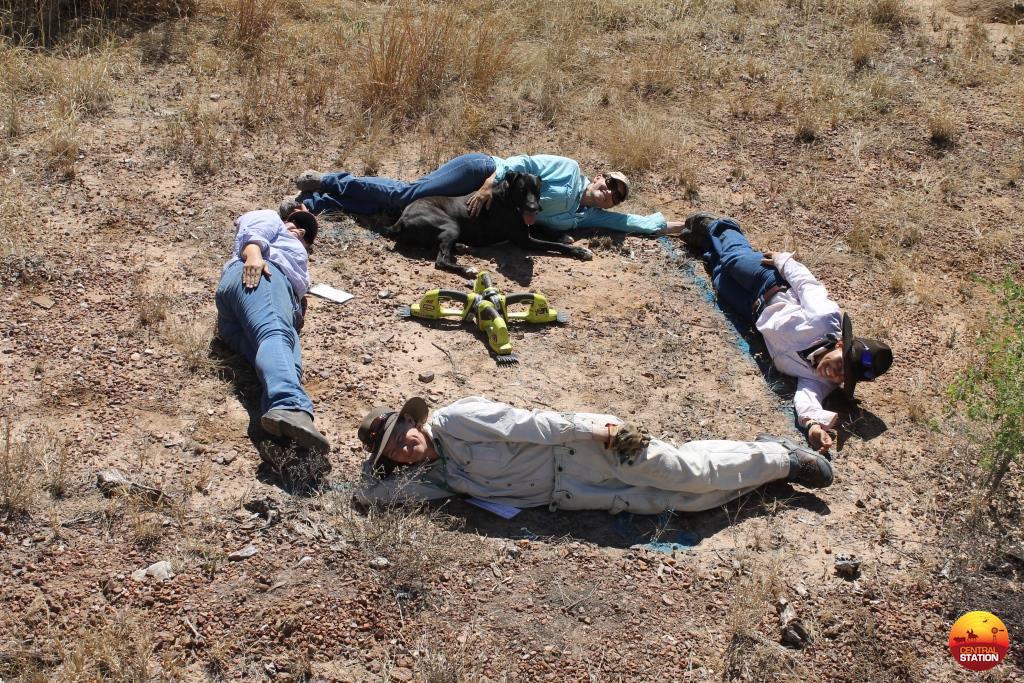 Last year’s team of rangeland scientists having a different take on the annual team photo!
Last year’s team of rangeland scientists having a different take on the annual team photo!
